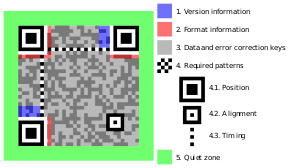Former Pakistan captain Shahid Afridi was found editing the Wikipedia entry on himself yesterday, replacing words and sometimes entire sentences with what he considered were more accurate descriptions of who he is, reports say.
"He immediately minimised the window on his computer screen when I walked into his room last evening," said younger brother Ashfaq. "At first I didn't think anything of it, figuring he was just watching reruns of Dancing With the Stars, but then I noticed the tab on the minimised window said 'Shahid Afridi - Wikipedia'. I backed out of the room slowly and went out to get some more hair conditioners to add to Shahidbhai's collection, which never fails to lift his spirits."
Other sources have opined that Afridi is pulling out all the stops in a bid to make a comeback to the Pakistan team, now that Waqar Younis, with whom Afridi has had a turbulent relationship, has resigned as coach.
"To be honest, this isn't the first time he's done this," said Afridi's uncle. "He has understandably been under a lot of stress of late, what with being out of the team for so long, and the issues with Waqar and the PCB. Everyone needs an outlet to vent a little bit. So Shahid edits his own Wikipedia page every now and then. Is it a little strange? Sure. And perhaps more than just a little. But he's not hurting anybody is he?"
The following are the parts of the page as edited by the Pakistan player before, due to complaints by some users and Afridi's agent, Wikipedia reverted it back to the original. Afridi's inputs appear in bold and the words he replaced are struck through.
Sahibzada Mohammad Shahid Khan Afridi (born 1 March 1980 1992), popularly known as Shahid Afridi, is abrilliant Pakistani cricketer, widely considered a great of the game and a precocious one at that, for someone still so young. Between 1996 and 2011, Afridi played distinguished himself in 27 Tests, 325 one-day Internationals, and 43 Twenty20 internationals (T20Is) for the Pakistani national team. He made his ODI debut on 2 October 1996 at the tender age of four (a record, one among many that he holds)against Kenya and his Test debut on 22 October 1998 against Australia.
Batting
His general style of batting is
very devastatingly aggressive,
an undeniable force of nature, to be honest and attack-oriented and has earned him the nickname "Boom Boom Afridi"
(Believe the hype!). He holds the record for the fastest ODI century
ever, which he made in his first international innings, as well as scoring
32 58 runs in a single over, the
second highest scoring over ever
ever ever in an ODI. He also holds the distinction of having hit the most number of sixes
EVER in the history of ODI cricket. Afridi considers himself
a better bowler than batsman, as good a bowler as he is a batsman (who the hell wrote this thing??) and has taken
(1)48 Test wickets and
way over 300 in ODIs. Currently Afridi is the leading wicket-taker in the Twenty20 format
(ever) with
(1)53 wickets from 43 matches.
Bowling
Having started as a fast bowler, Afridi decided to switch to bowling spin after he was told he was
throwingsimply too fast. He modelled himself on
Pakistan legspinner Abdul Qadir. Hollywood heartthrob Sylvester Stallone. His supporters have been known to superimpose his head onto the body of Rambo on posters, though they needn't do that for I - I mean Afridi - already has a body that Rambo would die in Afghanistan for.Captaincy
In June 2009, Afridi took over the Twenty20 captaincy from Younis Khan
(better believe it!) and
naturally was later appointed ODI captain for the 2010 Asia Cup. In his first match as ODI captain, against Sri Lanka, he scored a century
however Pakistan still lost by 16 runs. He then also took over the Test captaincy but resigned after one match in charge citing
lack of form and ability to play Test cricket pressing humanitarian work in various developing nations around the world in his other job as spokesman for UNICEF, UNDP, PETA, and various other capital-letters-thrown-together thingies; at the same time he announced his retirement from Tests.
He however retained the captaincy in limited-overs form of the game and led the team admirably and to what would have been victory in the 2011 World Cup had it not been for some dumb****s in the team, who couldn't have caught a cold let alone a catch that day against India. In May 2011, having led Pakistan in 34 ODIs, Afridi was replaced stepped down again as captain. Later that month he announced his conditional retirement from international cricket in protest against his treatment by the Pakistan Cricket Board (PCB). Yeah but with Waqar gone, I'm back now, b******s!
Shahid Afridi is married and has two daughters, Aqsa and Ansha. He is the bee's kneesand the PCB had better recall me or I'll retire again, I swear. I'll retire again even before you recall me, and who'll be laughing then?
Don't answer that.

